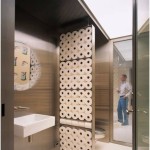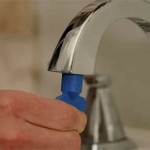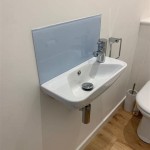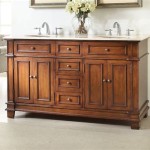How To Replace and Install a Bathroom Exhaust Fan
A bathroom exhaust fan is a critical component in maintaining a healthy and comfortable home environment. These fans effectively remove excess moisture and odors, preventing the growth of mold and mildew, which can damage building materials and pose health risks. Over time, bathroom exhaust fans can become noisy, inefficient, or completely fail, necessitating replacement or installation. This article outlines a step-by-step guide on how to replace or install a bathroom exhaust fan, ensuring proper functionality and longevity.
Key Considerations Before Starting the Project
Before embarking on the replacement or installation of a bathroom exhaust fan, it's crucial to address several key considerations. These preliminary steps ensure a smooth and successful project, minimizing potential complications and maximizing safety.
Safety First: The foremost consideration is safety. Electrical work presents inherent risks, and it is vital to prioritize personal safety. Before initiating any work, the power to the bathroom circuit breaker must be switched off. This action eliminates the risk of electrical shock. Furthermore, personal protective equipment (PPE) should be worn, including safety glasses to protect the eyes from debris and work gloves to enhance grip and protect the hands.
Fan Selection: Choosing the right exhaust fan is essential for optimal performance. Several factors influence fan selection, including the size of the bathroom, the fan's airflow capacity (measured in cubic feet per minute or CFM), and the noise level (measured in sones). As a general guideline, a bathroom requires approximately 1 CFM per square foot of room area. For example, a 50-square-foot bathroom would require a fan with a CFM rating of at least 50. Noise levels should also be considered, especially for individuals sensitive to noise. Fans with lower sone ratings are quieter.
Ductwork Assessment: The existing ductwork plays a crucial role in the fan's efficiency. The ductwork should be inspected for any obstructions, such as kinks, bends, or blockages. These obstructions can significantly reduce airflow and diminish the fan's effectiveness. If the existing ductwork is damaged or inadequate, it may need to be replaced or upgraded to ensure proper ventilation. The diameter of the duct should match the fan's outlet to maintain optimal airflow. Ideally, ductwork should be insulated to prevent condensation and further improve efficiency.
Tools and Materials: Having all the necessary tools and materials on hand before starting the project saves time and minimizes frustration. Essential tools include a screwdriver (both Phillips head and flat head), wire strippers, wire connectors (wire nuts), a utility knife, a drill, a measuring tape, safety glasses, work gloves, and a ladder. Required materials include the new exhaust fan, duct tape or foil tape, and potentially new ductwork or fasteners, depending on the existing installation.
Step-by-Step Guide to Replacing an Existing Bathroom Exhaust Fan
Replacing an existing bathroom exhaust fan is a common home improvement project that can typically be completed within a few hours. Following these steps ensures a safe and efficient replacement process.
Step 1: Prepare the Area: Begin by protecting the bathroom floor with a drop cloth or old towels. This measure prevents debris from damaging the floor surface. Ensure adequate lighting is available in the work area; a work light may be necessary if the existing lighting is insufficient.
Step 2: Turn Off the Power: Locate the circuit breaker that controls the bathroom's electrical circuit and switch it off. Verify that the power is off by testing the existing fan switch or using a non-contact voltage tester. This step is critical for preventing electrical shock.
Step 3: Remove the Old Fan Cover: Carefully remove the cover of the existing exhaust fan. Most fan covers are held in place by clips or screws. Gently pull or unscrew the cover to detach it from the fan housing.
Step 4: Disconnect the Electrical Wiring: Locate the electrical wiring connected to the fan motor. Use a screwdriver to disconnect the wires from the fan's electrical terminals. Typically, there will be three wires: a black (hot) wire, a white (neutral) wire, and a green or bare copper (ground) wire. Use wire strippers to carefully remove any electrical tape covering and disconnect the wires from the fan, using a screw driver to loosen the wire nuts.
Step 5: Disconnect the Ductwork: Detach the ductwork from the fan housing. The ductwork is usually connected to the fan with duct tape or a metal clamp. Carefully remove the tape or clamp to disconnect the duct from the fan. If the ductwork is old or damaged, it may be necessary to replace it at this time. Examine the existing ductwork to ensure it is properly connected and sealed. If it is damaged, cut the old ductwork away as close to the collar of the fan as possible. Do not allow the old ductwork to fall back into the wall or ceiling cavity.
Step 6: Remove the Old Fan Housing: Remove the old fan housing from the ceiling. The housing is typically secured to the ceiling joists with screws or nails. Use a screwdriver or drill to remove the fasteners and carefully lower the fan housing. It may be necessary to use a utility knife to cut any caulk or adhesive that is holding the housing in place. If the fan is difficult to remove, check for additional fasteners or obstructions that may be preventing it from coming loose. In some cases, the fan housing may be attached to the ceiling with metal straps or brackets. These will need to be detached before the housing can be removed.
Step 7: Install the New Fan Housing: Position the new fan housing in the ceiling opening. Secure the housing to the ceiling joists using screws or nails. Ensure that the housing is level and properly aligned. The new fan housing may require some minor adjustments to fit properly in the existing opening. If necessary, use shims to ensure that the housing is level.
Step 8: Connect the Ductwork: Attach the ductwork to the new fan housing. Use duct tape or foil tape to create a tight, secure seal. Ensure that the ductwork is properly aligned and that there are no kinks or bends that could restrict airflow. The ductwork should be insulated to prevent condensation and improve energy efficiency. Avoid using screws to secure the ductwork to the fan housing, as they can damage the ductwork and reduce its effectiveness. Using foil tape around the connection provides the best seal.
Step 9: Reconnect the Electrical Wiring: Connect the electrical wiring to the new fan motor. Match the wires according to their color: black to black, white to white, and green or bare copper to green or bare copper. Secure the wires with wire connectors (wire nuts). Ensure that the connections are tight and secure. A loose connection can cause the fan to malfunction or create a fire hazard.
Step 10: Install the Fan Cover: Attach the new fan cover to the fan housing. The cover should snap or screw into place. Ensure that the cover is securely attached and that it is properly aligned. Test the fan to ensure that it is functioning properly. If the fan is not working, check the electrical connections and the circuit breaker. Replace the old fan cover, ensuring it snaps or screws into place properly. Replace the light bulb if the exhaust fan unit also serves as a light fixture.
Step 11: Test the Fan: Turn the power back on at the circuit breaker. Test the fan to ensure that it is functioning properly. Check for any unusual noises or vibrations. Verify that the fan is effectively removing moisture and odors from the bathroom. Observe the exhaust outlet outside the house to ensure air is properly being exhausted.
Installing a New Bathroom Exhaust Fan (Without Existing Fan)
Installing a new bathroom exhaust fan where one didn't previously exist requires more extensive work, including cutting a hole in the ceiling and potentially running new electrical wiring and ductwork. The following steps outline the process.
Step 1: Planning and Preparation: Determine the optimal location for the new exhaust fan. Ideally, the fan should be located near the shower or toilet, where moisture and odors are most concentrated. Ensure that the location is accessible from the attic or crawl space above the bathroom. Check for any obstructions, such as pipes or wiring, that may interfere with the installation. Obtain the necessary permits from the local building department, as required.
Step 2: Cut the Ceiling Opening: Using a drywall saw or a utility knife, carefully cut a hole in the ceiling according to the dimensions specified in the fan's installation instructions. Be careful not to damage any wiring or plumbing that may be located behind the ceiling. It's advisable to wear safety glasses and a dust mask to protect yourself from debris. Create a template from the fan housing to trace the hole dimensions onto the ceiling before cutting.
Step 3: Run Electrical Wiring: If there is no existing electrical wiring near the fan location, it will be necessary to run a new circuit from the electrical panel. This task should be performed by a qualified electrician to ensure compliance with local electrical codes and safety regulations. The electrician will run the wiring from the electrical panel to a junction box near the fan location. From the junction box, wiring will be run to the fan housing. If you are comfortable doing the electrical work yourself, ensure you follow all applicable electrical codes and safety precautions. Turn off the power to the circuit before working on the wiring. Use the correct gauge wire for the circuit and properly ground the fan.
Step 4: Install Ductwork: Run the ductwork from the fan housing to an outside vent cap. The ductwork should be as straight as possible to minimize airflow resistance. Use insulated ductwork to prevent condensation and improve energy efficiency. Secure the ductwork to the fan housing and the vent cap with duct tape or foil tape. Ensure that the ductwork is properly supported to prevent sagging. The termination point for the exhaust duct needs to vent to the outside of the house. If there is no existing vent, a hole needs to be cut into the wall or roof to accommodate the vent. Select an appropriate vent cap and install it according to the manufacturer's instructions. Ensure that the vent cap is properly sealed to prevent water from entering the house. In cold climates, choose a vent cap with a damper to prevent cold air from entering the house when the fan is not in use.
Step 5: Secure the Fan Housing: Position the fan housing in the ceiling opening and secure it to the ceiling joists using screws or nails. Ensure that the housing is level and properly aligned. The fan housing should be securely attached to the ceiling joists to prevent it from vibrating or falling. Use shims if necessary to ensure that the housing is level. Fasten the fan housing using screws that are long enough to penetrate the joists securely. Do not overtighten the screws, as this can damage the housing.
Step 6: Connect Wiring and Ductwork: Connect the electrical wiring to the fan motor, matching the wires according to their color. Secure the wires with wire connectors. Attach the ductwork to the fan housing, ensuring a tight and secure seal. Follow the wiring diagram that comes with the fan to ensure proper installation of electrical components. Double check all the wiring connections before proceeding to install the fan cover.
Step 7: Install the Fan Cover and Test: Install the fan cover and turn the power on at the circuit breaker. Test the fan to ensure that it is functioning properly. Inadequately installed ductwork contributes to moisture buildup in the system. If condensation occurs, add insulation to the ductwork to minimize moisture. Ensure the fan is positioned to adequately remove the moisture or odor from the bathroom.
Troubleshooting Common Problems
Even with careful installation, some problems may arise. Addressing these issues promptly ensures the fan operates efficiently and safely.
Fan Not Working: If the fan is not working, the first step is to check the circuit breaker to ensure it has not tripped. Also, verify that all wiring connections are secure and properly made. A loose connection or a tripped circuit breaker is the most common cause of a non-functioning fan.
Fan is Noisy: Excessive noise can be caused by several factors, including loose mounting screws, vibrations, or a worn-out motor. Tighten all mounting screws and check for any obstructions that may be causing vibrations. If the motor is worn out, it may need to be replaced. Also, examine the fan blades for debris or obstructions as this can also be a source of noise. Clean and lubricate any moving parts to reduce friction that may be causing noise.
Insufficient Airflow: Insufficient airflow can be caused by obstructed ductwork, an undersized fan, or a poorly sealed duct connection. Inspect the ductwork for kinks, bends, or blockages. Ensure that the fan has the appropriate CFM rating for the size of the bathroom. Seal any leaks in the ductwork to improve airflow. Verify that the outside vent is free from debris. Using the proper size fan is also important; a fan too small for the bathroom cannot properly remove moisture.

How To Replace And Install A Bathroom Exhaust Fan

How To Install A Bathroom Fan Step By Guide Bob Vila

How To Replace Or Install An Easy Bath Fan The Home Depot

Install A New Bathroom Vent Fan Light

How To Install A Bathroom Fan Replacement The Home Depot

How To Install A Bathroom Fan Diy Family Handyman

Installing A Bathroom Fan Fine Homebuilding

How To Replace Or Install An Easy Bath Fan The Home Depot

Remove Install A Bathroom Fan Grille In 1 Min

Tips For Installing Or Replacing A Bathroom Fan Forbes Home
Related Posts







